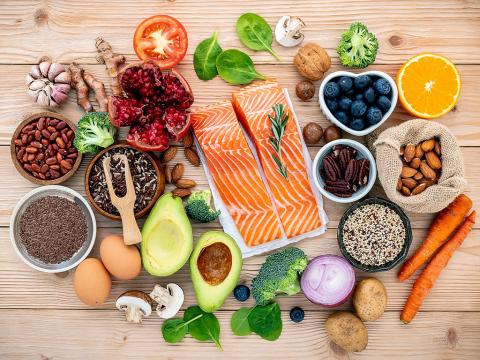
Over the years, research has continued to show that blood sugar regulation plays an important role in promoting overall health and reducing our cancer risk. When we consume meals or beverages that contain carbohydrates, our blood sugar will naturally rise, however, certain foods and dietary patterns can elevate blood sugar levels past a healthy threshold, which are often referred to as blood sugar spikes.
The concern with blood sugar spikes is that when there is a dramatic increase in blood sugar levels, this causes a subsequent increase in a hormone called insulin. When insulin is elevated, this also elevates insulin-like-growth factor-1 (IGF-1), which has been shown to aid cancer cell growth. Another consequence of these spikes is feeling more fatigued as well as sugar cravings after meals, which may lead to further difficulties with weight management. In contrast, those who have stable blood sugar levels tend to feel more energetic and satisfied after meals.
The cause of unhealthy blood sugar spikes is not only consuming sugar in high-sugar foods like sugary drinks, desserts, and candy, but also in refined carbohydrates that are low in fibre such as white rice, breads, white potatoes, and white flour. Although it can be difficult to completely avoid these foods, there are specific strategies we can take to reduce spikes in blood sugar when these foods are consumed.
Here are 3 natural and simple ways you can help reduce your blood sugar:
- Food combining
- When planning meals, it is important to consider sources of healthy protein and fats and combine them with carbohydrate foods. Consuming a balance of these macronutrients helps to slow the release of glucose into the bloodstream, therefore avoiding a spike in blood sugar. Protein and fats also keep you satiated for longer after meals, which will help with weight management goals. Healthy sources of protein include fish, chicken, beans, and legumes, and healthy sources of fat include nuts and seeds, nut butters, olive oil, and avocados.
- Choose complex carbohydrates vs. simple/refined carbohydrates
- A major difference between complex and simple/refined carbohydrates is that complex carbohydrates are higher in fibre. Similar to food combining, the consumption of fibre-rich foods has been shown to slow the release of sugar into the bloodstream. Examples of complex carbohydrates that are high in fibre include brown rice, sweet potatoes, quinoa, whole grains, beans, legumes, and whole fruits and vegetables.
- Go for a short walk after meals
- A recent study found that going for a brief, light walk after a meal can significantly improve blood sugar response and insulin levels compared to prolonged sitting. Positive effects on blood sugar can be seen anywhere from standing to going for a short stroll around the block.
Interested in learning more about how you can make healthy changes to your diet? Our clinic offers a free, online 4-week nutrition program to those that have been diagnosed with cancer, which runs every Thursday starting September 22, from 7-8 pm. Register here: https://ccnmicc.ca/programs-events
Author: Melissa Boulos, CCNM Integrative Cancer Centre Intern